Question 1
Five resistors of equal resistance are connected to a cell as shown.

Which of the following is correct about the power dissipated PX, PY and PZ in resistors X, Y and Z respectively?
| PX | PY | PZ | |
| A. | |||
| B. | |||
| C. | |||
| D. |
Five resistors of equal resistance are connected to a cell as shown.

Which of the following is correct about the power dissipated PX, PY and PZ in resistors X, Y and Z respectively?
| PX | PY | PZ | |
| A. | |||
| B. | |||
| C. | |||
| D. |
Two cells, X and Y, each with internal resistance 1.0 Ω, are connected in a circuit with two resistors as shown.
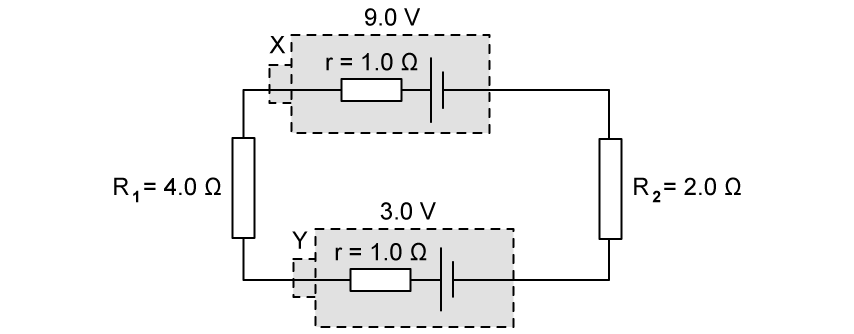
Which of the following statements is not correct?
The circuit charges cell X
The power dissipated in cell X is greater than the power dissipated in cell Y
The charging current is 3.0 A
The circuit charges cell Y
A cell with e.m.f. V0 and negligible internal resistance is connected across a uniform resistance wire of length XY.
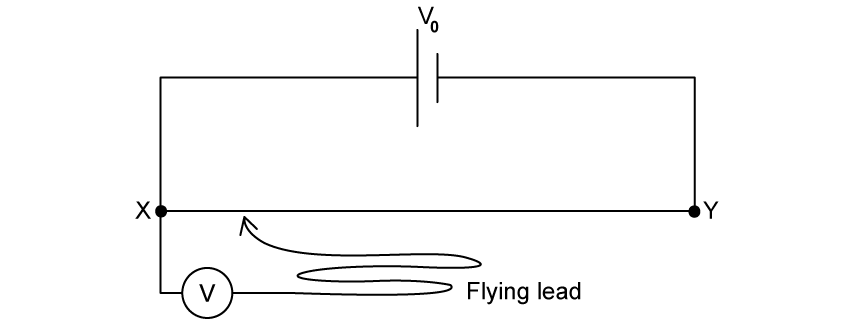
The flying lead connected at X and is able to connect to XY at any distance r from X.
Which expression correctly determines the reading on the voltmeter, V?
A circuit contains two batteries, an external resistor and a motor, which is attached to a pulley that lifts a load. The direction of current in the circuit is indicated.
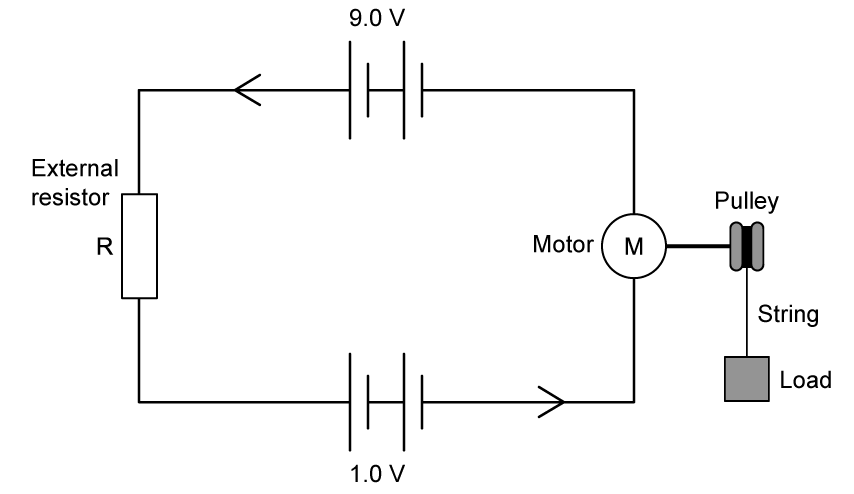
Which of the following energy transformations most accurately describes the behaviour of the circuit?
chemical → electrical + thermal + mechanical
chemical + electrical → mechanical + thermal
chemical → electrical + thermal + mechanical + gravitational
chemical + electrical → thermal + mechanical + gravitational
A pump is designed to move water through a certain height h such that the water flows back down, turning a paddle wheel. Such a system is often used to explain the operation of a battery in an electric circuit.
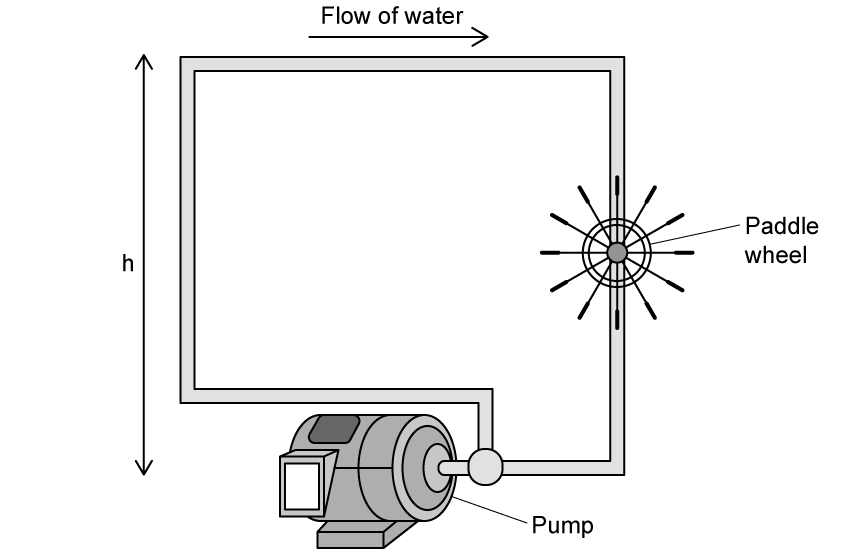
Which row in the table below best contrasts the work done by the pump and a battery?
| Pump | Battery | |
| A. | Does work on the water flowing in the pump | Does work on the current flowing in the wires |
| B. | Does work on the water flowing in pipes | Does work on the current flowing in the wires |
| C. | Does work on the water flowing in the pump | Does work on the ions in the battery |
| D. | Does work on the water flowing in the pipes | Does work on the ions in the battery |
A 24 V solar panel charges a 12 V battery with internal resistance 0.10 Ω.
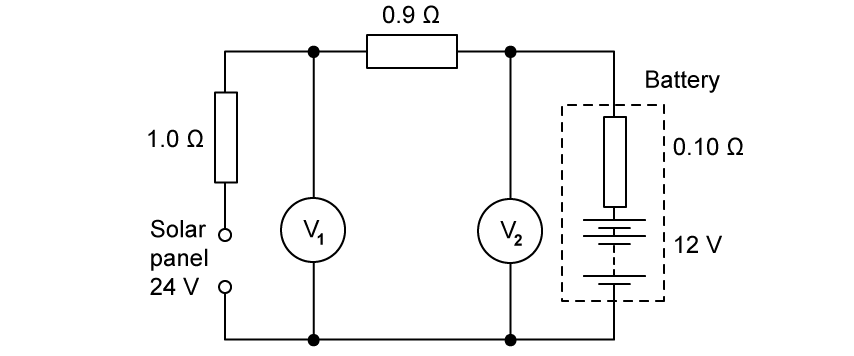
Which of the following is correct?
| V1 | V2 | |
| A. | 18 | 12.6 |
| B. | 30 | –12.6 |
| C. | 18 | –12.6 |
| D. | 30 | 12.6 |
A cell has internal resistance r.
A graph of terminal potential difference V across the cell against current drawn from the cell I is shown. The scales are such that the length is equal to the length
. A point P is chosen on the graph, such that
is a square.

Which of the following statements is correct?
P is the point at which the load resistance is maximum
P is the point at which maximum power is delivered by the cell
P is the point at which minimum power is delivered by the cell
P is the point at which the internal resistance of the cell reduces to zero
Which of the following correctly describes the electromotive force of a cell?
The difference in energy between that needed to drive unit charge through the load resistance and through the cell
The energy used to drive unit charge through the load resistance
The energy used to drive unit charge through the cell's internal resistance
The total energy used to drive unit charge round the complete circuit
The figure shows how the e.m.f. of a simple generator varies with time.

Which of the following statements is incorrect?
The alternating e.m.f. does not affect the internal resistance of the generator
The frequency of the e.m.f. is 200 Hz
The internal resistance of the generator alternates with a frequency of 200 Hz
The internal resistance of a power supply depends on its capacity
Two almost identical lead-acid accumulator batteries, X and Y, are connected in a circuit as shown.

The following information is provided:
What is the resistance of R?
2.0 mΩ
2.0 Ω
2.0 kΩ
20 kΩ